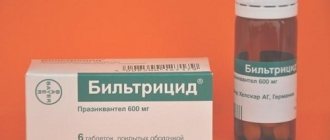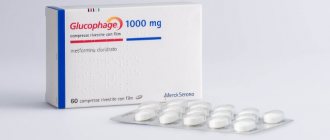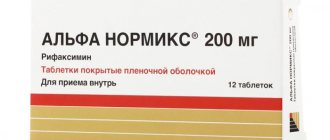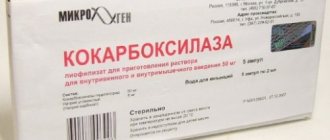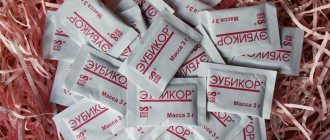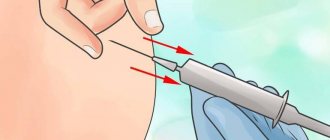Prohibited during pregnancy
Prohibited during breastfeeding
Prohibited for children
Has restrictions for older people
Has limitations for liver problems
Has limitations for kidney problems
Azaleptin is a drug whose action is aimed at treating psychosis and other serious diseases of the nervous system and human psyche. Treatment with Azaleptin must be carried out exclusively under the supervision of a physician and carefully following the rules of safe therapy defined in the instructions for use.
Instructions for use of Azaleptin
Azaleptin's prescription should take into account many factors of the patient's individual condition, which can only be assessed by a specialist. The dose, according to the instructions, may vary depending on the stage of the disorder and tolerability of the drug components. It is recommended that you read the sections on contraindications, side effects and drug interactions very carefully.
Composition and release form
The drug Azaleptin is available in the form of yellow-greenish flat-cylindrical tablets, the active ingredient of which is clozapine. The tablets are packaged in blisters, which are placed in cardboard packaging. Composition of one tablet of the drug:
| Compound | Quantity |
| clozapine (active ingredient) | 25 or 100 mg |
| Auxiliary components: | |
| calcium stearate | 0.0015 or 0.0025 g |
| lactose monohydrate | 0.1010 or 0.1100 g |
| potato starch | 0.0225 or 0.0375 g |
Pharmacodynamics and pharmacokinetics
Azaleptin tablets are antipsychotic-neuroleptic drugs derived from dibenzodiazepine. They have a sedative effect, do not cause extrapyramidal disorders, and do not affect the production of prolactin. The active substance clozapine is an atypical antipsychotic. The action of the drug is based on the blockade of dopamine receptors in the mesolimbic and mesocortical structures of the brain, the removal of aggressiveness, and the effect on dopamine stimulants.
After oral administration, the tablets are quickly absorbed from the gastrointestinal tract, the substance reaches its maximum concentration in the body after 2.5 hours, and constant concentration after 8-10 days of administration. The drug is metabolized during its first passage through the liver and forms metabolites with the participation of cytochrome isoenzymes. The half-life is 8 hours. Excretion occurs through the kidneys and intestines.
Indications for use of Azaleptin
The drug has high therapeutic efficacy, which determines a wide range of its use as an antipsychotic agent. Azaleptin is prescribed for:
- schizophrenia;
- bipolar disorder;
- delusional psychoses;
- psychopathy;
- organic pathologies of the brain;
- addictions (drug addiction, alcoholism, substance abuse).
The strong antipsychotic effect of the drug is combined with a pronounced antinegative and sedative effect. The drug reduces the manifestations of productive disorders, reduces the degree of mental agitation and aggression, and reduces the desire to commit suicide. Azaleptin is able to correct behavioral disorders and mitigate the symptoms of severe psychotic disorders.
Pharmacological action and pharmacokinetics
The active ingredient of the drug Azaleptin is clozapine, a tricyclic derivative of dibenzodiazepine, similar in its chemical structure to tricyclic antidepressants (rispolept, olanzapine and quetiapine) and benzodiazepine tranquilizers. The metabolism of clozapine occurs in the liver to norclozapine (N-desmethylclozapine) and benzodiazepines, which have all the pharmacological properties of the parent compound, causing the pronounced antipsychotic and anti-anxiety activity of Azaleptin.
The mechanism of pharmaceutical action of this drug is based on varying degrees of blocking of different subtypes of CNS receptors: dopamine (with a predominance of blocking D2
and a less pronounced effect on D1, D3, D4, D5), muscarinic (M 1, 2, 3, 5), serotonin (5-HT2A, 5-HT1A, 5-HT1C), H1-histamine and α1-, α2- adrenergic receptors and GABA receptors, and it also has agonism at M4 receptors. Unlike typical antidepressants, Azaleptin has a simultaneous agonistic effect on D2-dopamine receptors in the mesocortical region of the brain with a pronounced suppression of dopaminergic activity in the mesolimbic pathway, which causes a low proportion of extrapyramidal disorders (up to 20%) and the absence of tardive dyskinesia.
It has strong antipsychotic, moderate antimanic and tricyclic-like antidepressant activity in combination with pronounced anti-anxiety, sedative and hypnotic effects.
Directions for use and dosage
Azaleptin therapy begins with 25-50 mg and gradually increases the dose to 200-300 per day. The maximum daily dose is 600 mg. The tablets are intended for oral administration. The daily dose should be divided into 2-3 doses, which are taken after meals. In some cases, as prescribed by a doctor, the daily dose can be taken at one time (before bedtime). After achieving an acceptable therapeutic effect, maintenance therapy is prescribed at a dose of 25-200 mg (a single daily dose in the evening is acceptable).
special instructions
The drug can only be used under the supervision of the attending physician, who, before prescribing treatment and determining the dosage, can prescribe a general blood test, assess the state of the cardiovascular system, liver, kidneys and draw a conclusion about the patient’s current state of health. When adjusting the dosage regimen, it is necessary to take into account that a sharp increase in dose can cause hypotension and an epileptic seizure. The patient should be instructed to report symptoms of myocarditis to the physician, including:
- chest pain;
- dyspnea;
- heartbeat;
- weakness.
- Medicines for thrush
- TV antenna for a summer residence
- How to get rid of dandruff
During treatment with Azaleptin, it is necessary to systematically perform a blood test to determine the number of leukocytes and neutrophils in the blood. For the first 6 months of treatment, blood tests should be weekly, then (up to a year) - once every two weeks, and after 12 months, the analysis is carried out on a monthly basis. Control of the level of leukocytes is necessary in order to prevent their level from decreasing under the influence of the drug to critical levels. Due to the risk of weight gain during a course of treatment, it is recommended:
- activate your lifestyle;
- reduce caloric intake.
Reviews about the drug Azaleptin
Azaleptin is widely used in medical practice and has many both positive and negative reviews from patients and specialists.
Doctors
Sivolap Yu.B., neurologist, psychotherapist, St. Petersburg: “Azaleptin is a classic among antipsychotics, which we have been using for a very long time. It is quite effective in cases of mental disorders of various origins. It also has a sedative effect and is often used in acute illness.
Most often it is prescribed when other means do not help. The most important thing is to choose the dose individually for each case. Despite its effectiveness, Azaleptin can provoke neurolepsy and causes addiction, which is practically untreatable. In this regard, the patient is under the supervision of a doctor, and regular monitoring of the patient’s blood tests is carried out.”
Drug interactions
The simultaneous use of Azaleptin with drugs entails different effects. The most common combinations include:
- Combination with antidepressants enhances the inhibitory effect on bone marrow hematopoiesis. The medicine enhances the anticholinergic effect of drugs of the same name and reduces the effectiveness of sulfonylurea-based medications.
- Combination with Digoxin, Heparin, Phenytoin, Warfarin increases their concentration in plasma. These drugs displace clozapine from binding to proteins.
- The simultaneous use of the drug with valproic acid changes the concentration of clozapine in the blood plasma, but there are no clinical manifestations of interaction.
- Combination with Carbamazepine reduces the plasma concentration of clozapine and can cause severe pancytopenia and neuroleptic malignant syndrome.
- Combination with caffeine increases the concentration of clozapine in the blood and increases the frequency of side effects.
- Combination with lithium carbonate can lead to psychosis, myoclonus, delirium, convulsions, neuroleptic malignant syndrome.
- The simultaneous use of clozapine with risperidone increases the concentration of the former in the blood and inhibits its metabolism. When clozapine is rapidly replaced by risperidone, dystonia develops.
- Rifampin increases the rate of metabolism of Azaleptin.
- Phenytoin, gel-like antacids, cholestyramine, norepinephrine, adrenaline reduce the concentration of the active substance, Fluoxetine, Fluvoxamine, Paroxetine, Sertraline, Ciprofloxacin, Cimetidine, Erythromycin increase it, which leads to toxicity.
Similar drugs:
- Aminazine Dragee
- Sulpirid Tablets
- Azaleptin Semi-finished powder
- Lithium carbonate (Lithii carbonas) Oral tablets
- Droperidol Solution for intravenous and intramuscular administration
- Egolanza Oral tablets
- Rispaksol Oral tablets
- Sulpirid Oral solution
- Thiodazine Oral tablets
- Clopixol Depot Solution for intramuscular administration
** The Drug Directory is intended for informational purposes only. For more complete information, please refer to the manufacturer's instructions. Do not self-medicate; Before starting to use the drug Azaleptin, you should consult a doctor. EUROLAB is not responsible for the consequences caused by the use of information posted on the portal. Any information on the site does not replace medical advice and cannot serve as a guarantee of the positive effect of the drug.
Are you interested in the drug Azaleptin? Do you want to know more detailed information or do you need a doctor's examination? Or do you need an inspection? You can make an appointment with a doctor - the Euro lab is always at your service! The best doctors will examine you, advise you, provide the necessary assistance and make a diagnosis. You can also call a doctor at home . Euro lab clinic is open for you around the clock.
** Attention! The information presented in this medication guide is intended for medical professionals and should not be used as a basis for self-medication. The description of the drug Azaleptin is provided for informational purposes and is not intended for prescribing treatment without the participation of a doctor. Patients need to consult a specialist!
If you are interested in any other drugs and medications, their descriptions and instructions for use, information about the composition and form of release, indications for use and side effects, methods of use, prices and reviews of drugs, or you have any other questions and suggestions - write to us, we will definitely try to help you.
Side effects of Azaleptin
Therapy with Azaleptin sometimes does not go away without leaving a trace. Many patients note its side effects on various body systems. Among them:
- fever, drowsiness, tardive dyskinesia, headache, epileptic seizures, agitation, depression, akathisia, restless sleep, confusion, insomnia, tremor, muscle rigidity, anxiety, autonomic disorders, dizziness, fainting, anxiety, increased fatigue;
- impulsiveness of actions;
- arterial hypertension, arrhythmia, tachycardia, arterial or orthostatic hypotension;
- heartburn, nausea, dry mouth, vomiting, increased salivation;
- weight gain, increased sweating;
- thrombocytopenia, eosinophilia, leukopenia, granulocytopenia, agranulocytosis, cholestasis;
- violation of accommodation;
- constipation;
- hyperthermia;
- disturbances in urine production and urination;
- myasthenia gravis;
- leukocytosis;
- decreased potency.
Overdose
Exceeding the dose of Azaleptin is manifested by depression of consciousness, anxiety, delirious disorders, and epileptic seizures. Thermal lability, tachycardia, hypotension, and collapse may occur. Due to cardiac dysfunction, intestinal atony and respiratory depression, death is possible. Treatment of poisoning consists of gastric lavage, taking sorbents, supporting respiratory function and heart function. Delayed digestive complications are possible. Dialysis or hemodialysis are ineffective.
Disputes and criticism from doctors
Psychiatrists also have their own opinions regarding Azaleptin. Mostly, psychiatrists criticize their colleagues for the unreasonable prescription of this drug. There are specific, and not at all harmless, indications for Azaleptin, but sometimes this drug is prescribed as a regular sleeping pill or sedative. Even with schizophrenia or another diagnosis, the prescription of antipsychotics is not always justified, because not all people with mental disorders need sedation. However, Azaleptin may be prescribed to them “just in case,” and people unnecessarily take a serious drug and suffer from side effects. In addition, Azaleptin itself does not treat schizophrenia or other disorders, it only relieves some symptoms, so treatment that involves only taking this drug can be considered obviously ineffective.
Contraindications
Caution should be exercised when prescribing the drug to patients with decompensated heart disease, severe liver or kidney failure, closed-angle glaucoma, prostate hyperplasia, intestinal atony, and epilepsy. Contraindications for the use of Azaleptin tablets are:
- history of granulocytopenia or agranulocytosis;
- inhibition of bone marrow hematopoiesis;
- myasthenia gravis;
- breathing problems;
- comatose states;
- toxic alcoholic psychosis;
- pregnancy, lactation;
- children under five years of age;
- hypersensitivity to constituent ingredients.
Analogs
The active component clozapine is also included in other drugs that are substitutes for the drug in question. Analogues of Azaleptin:
- Azaleptol - tablets with antipsychotic and sedative effects, used to treat schizophrenia;
- Azapine is a tablet drug for the treatment of schizophrenia, psychotic disorders in Parkinson's disease;
- Clozapine is the closest analogue of tablets and is a generic (cheap price);
- Clozasten is a sedative tablet used for psychomotor agitation and manic states;
- Azaleprol is a neuroprotector and antipsychotic in tablet format that eliminates emotional and behavioral disorders;
- Leponex is an antipsychotic tablet for the treatment of schizophrenia that does not respond to conventional therapy.
Additional recommendations
Based on reviews of Azaleptin, you can find out that taking tablets dulls a person’s natural reactions, causes drowsiness and inattention, so during the course of treatment you should not work with equipment that requires increased attention or drive a car. Also, patients taking this drug should temporarily refrain from potentially dangerous work associated with the need for concentration and high speed of psychomotor reactions.
Taking Azaleptin excludes the consumption of alcohol in any quantity and form.
During treatment with Azaleptin, regular scheduled monitoring of the condition of peripheral blood is necessary.
Azaleptin price
Azaleptin tablets are available for sale at a cost that is influenced by the concentration of the active substance in the drug and the pricing policy of pharmacies. It is difficult to buy the drug; it is not available in every network. Approximate Moscow and St. Petersburg prices:
| Type of drug | Pharmacy | Price, rubles |
| Tablets 100 mg 50 pcs. | Baltika-honey | 1330 |
| be healthy | 1419 | |
| Vitamin | 1324 | |
| Tablets 25 mg 50 pcs. | Baltika-honey | 449 |
| be healthy | 440 | |
| Violet | 558 |
Release form and composition
The drug is available in the form of tablets: flat-cylindrical in shape, greenish-yellow in color (10 pieces in blister packs and 50 pieces in dark glass/polymer jars, in a cardboard pack there are 5 packages or 1 jar and instructions for use of Azaleptin).
Composition of 1 tablet:
- active substance: clozapine (azaleptin) – 25 mg or 100 mg;
- excipients: potato starch, calcium stearate, lactose monohydrate (milk sugar).
